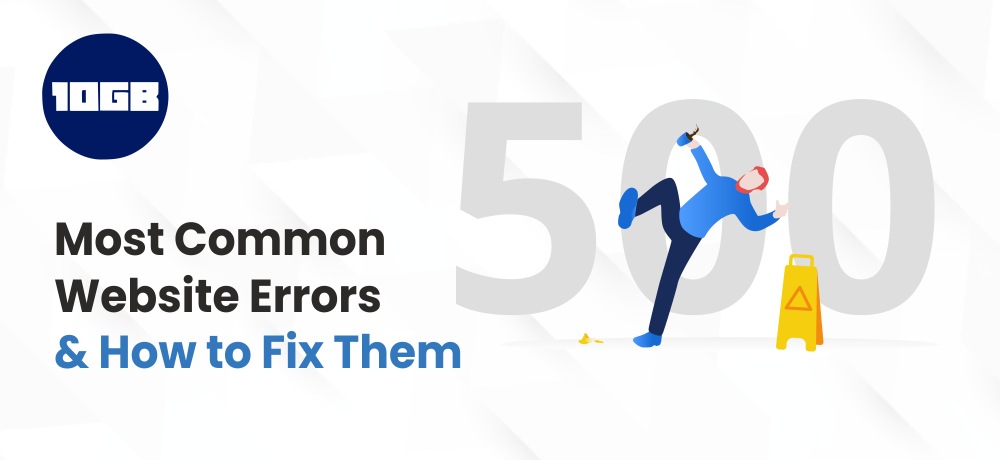In this blog post, we have penned down a list of some of the most common website errors that internet users face. Additionally, we also provide you with the steps that you can take to fix those errors. So let’s get started.
Performing a technical audit on your website is an ideal, proactive task that needs to be done regularly. Technical audit of the website is crucial to enhance the overall growth of a website. It is performed to make a website search engine friendly.
Eventually, the goal of an audit is to check the website for errors and take the necessary steps to resolve those website errors.
Now, let’s see some common website errors you can experience.
What Are The Most Common Website Errors
HTTP Errors
HTTP errors are usually experienced while visiting a website, these errors can be irritating for the website visitors. These errors are messages from the webserver signifying that something went wrong that triggered these messages.
Meanwhile, you can read this article on “What is a Web Server? and Types of Web Server“
Now let’s take a look at some of the most common HTTP errors.
401 Unauthorized
The 401 Unauthorized client error occurs when someone attempts to obtain access to the page for which they are not authorized. Usually, you can solve this error by reviewing the URL of the page that causes this 401 error. And even reviewing the URL doesn’t help, you can clear the browser cache or perform DNS flush to resolve this issue.
Also Read:
403 Forbidden
The 403 Forbidden error occurs when the server understands the requests however, it denies to authenticate it.
403 error is slightly different from the 401 unauthorized error as in this error the user doesn’t have the authentication to access that particular page.
Generally, you can fix this error by either generating a clean .htaccess file or temporarily deactivating your CDN.
404 Not Found
This is the most common website error that internet users observe. A browser displays a 404 error to the user whenever he/she tries to access the webpage that doesn’t or no longer exists. Usually, this error is caused by broken links, incorrect URLs, or a redirected page that is no longer valid.
404 error fix:
- Refresh the page
- Ensure you used the appropriate URL
- Clear the browser cache
- DNS Flush
- Create redirects for migrated content
408 Request Timeout
The 408 Request Timeout server error signifies that the server didn’t obtain a full request from the client within the server’s designated time period. This error is an HTTP response status code.
This error occurs whenever a server decides to close the connection that takes too long. In some cases, the server close the connection even without sending the error response.
408 request timeout fix:
- Refresh the page
- Ensure you used the appropriate URL
- Check for your internet connection
- Increase the server resources
500 Internal Server Error
The 500 Internal Server Error indicates that the server experienced an unexpected condition that obstructed it from completing the request. This error is a generic error for any 5xx error that cannot be easily defined.
500 error fix:
- Refresh the page
- Ensure you used the appropriate URL
- Check for your internet connection
- Check the permissions on PHP and CGI files
- Generate a clean .htaccess file
503 Service Unavailable
The 503 Service Unavailable error signifies that the server is not just ready to manage the request.
Additionally, scheduled maintenance or temporary overload which is after some time can be the causes for this 503 Service Unavailable error.
While you are making changes to the website, you can put your WordPress site into maintenance mode. This makes search engines identify that your site is currently down. By doing so, your website’s SEO won’t be affected by the downtime.
503 error fix:
- Refresh the page
- Ensure that you used the appropriate URL
- Deactivate your CDN temporarily
- Contact your host
504 Gateway Timeout
Yet another common website error that you can observe is a 504 error that occurs when one server did not receive a well-timed response from another server while it was trying to load the page. In most cases, the issue is not the fault of the site.
If your website is developed with WordPress and this issue is due to a corrupted database then you can install and run a plugin like WP-DBManager to repair and optimize your database. Or else you try contacting your hosting company to see whether the issue is from their side.
Conclusion
We hope that our list helped you understand what are the most common website errors and gave you the fixes for each of those errors.
Moreover, we at 10GB Hosting offer 24/7 support and assistance with our plans. We are happy to help with your queries and doubts.
